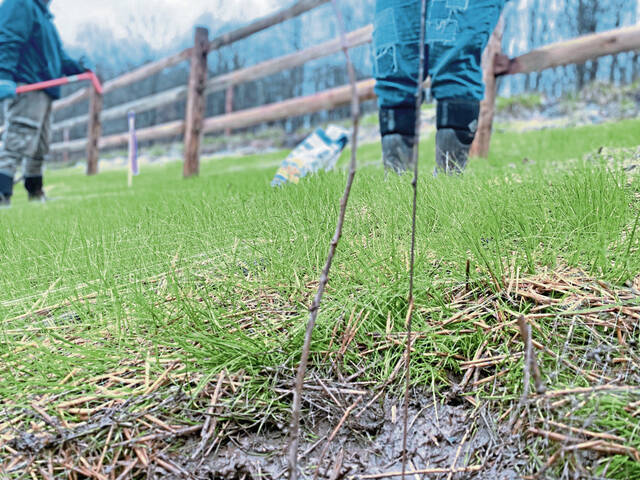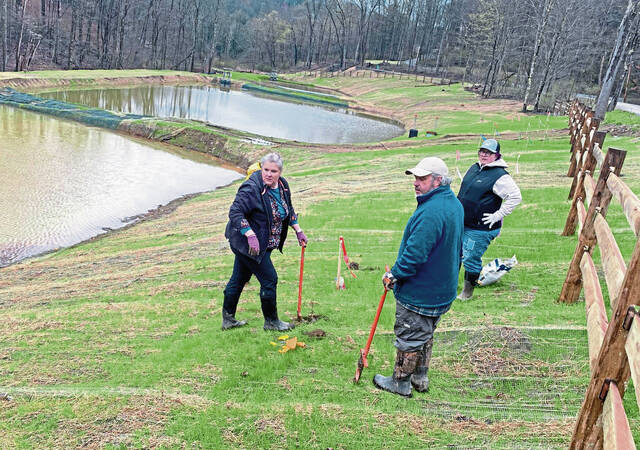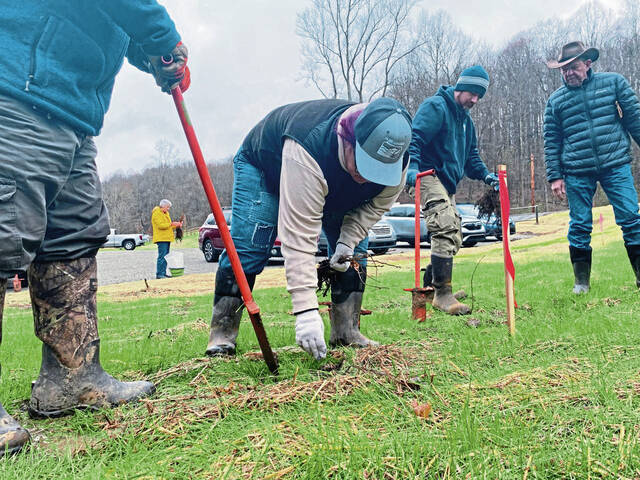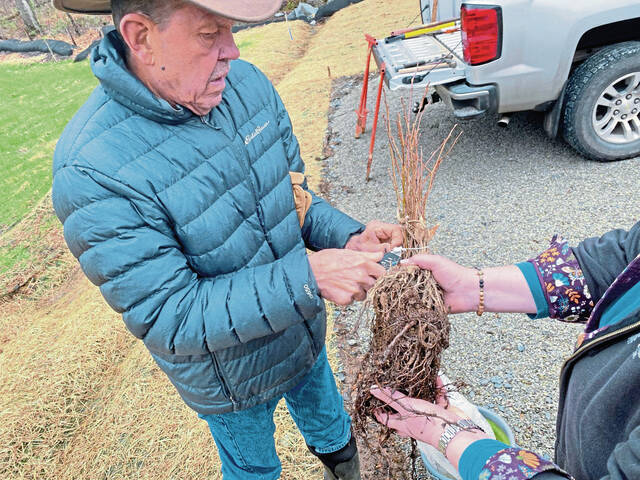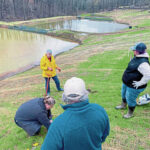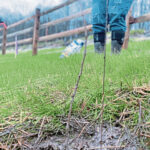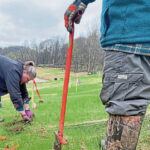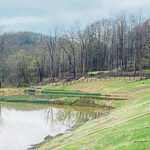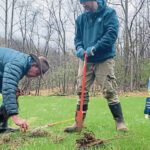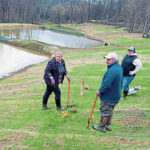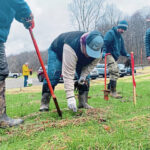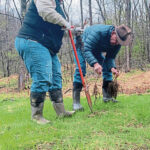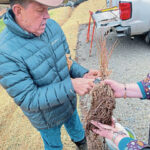To a passerby, it probably looked like the volunteers wandering a soggy Murrysville meadow one morning this week were just pushing muddy sticks into the ground.
In actuality, they were planting three dozen hybrid chestnut trees, part of a much larger planting that will help bring nature back to a section of the Lyons Run Watershed where an acid mine remediation project is now underway.
“We’re hoping to reestablish native growth on what was abandoned mine land,” said Melissa Church, program manager at the Murrysville Area Watershed Association.
It is the next step in an association project meant to clean heavy metals present in three mine-water sources within the Lyons Run watershed. Lyons Run flows south through central Murrysville and Penn Township, turning west along the Pennsylvania Turnpike. The watershed drains nearly 9 square miles of land along more than 17 miles of streams.
Using a series of ponds containing limestone beds — which impart alkalinity to the water as it moves from pond to pond and neutralize its acidity — the system is set up adjacent to the Westmoreland Conservancy’s Flinn Nature Reserve, and has been active for about two months, said Jean Keene, an employee with the state Department of Environmental Protection’s Bureau of Abandoned Mine Reclamation.
“We’ve started testing its functionality,” Keene said. “The water samples in the final pond have a neutral pH, so the treatment system is working.”
With the construction done, the area is slowly being reclaimed by nature as grass seed begins to take root, and yellow trout lily saplings are granted some protection from the local deer by growth netting. Volunteers from the association, the Westmoreland Conservancy, the DEP and nonprofit Green Forest Works were avoiding soft spots in the ground and looking for red stakes, marking the places where chestnut trees will be planted and eventually thinned.
“We plant from Alabama all the way to the New York border throughout Appalachia,” said Eric Oliver, a mined land reforestation specialist with Green Forest Works. His group supplied the chestnut saplings, which are almost native, but not quite.
“These are what we call ‘15/16th’ chestnuts,” Oliver said. “They’re 15/16th native American chestnut, and 1/16th Chinese chestnut, which is blight resistant.”
Chestnut was once a dominant species in eastern forests and a mainstay in Appalachia. During the early to mid-20th century, the trees were decimated by blight, which was accidentally imported along with the Japanese chestnut tree in 1904, according to the American Forestry Association.
Spread across the meadow were stakes with other labels for cedar and maple trees, which will be planted later.
“They have a nice mix planned that will blend right into the natural forest,” Oliver said.
Officials in Murrysville, which is in the middle of the Turtle Creek Watershed, have worked with the association and helped pursue grants for several years to help put acid mine remediation projects into place.
They are working with the DEP to seek funding for another project, which would be active instead of passive, using a lime slurry treatment plant to remove sulfur and aluminum runoff from mine water, which would then be pumped into a public pond where game fish are raised and stocked.
The watershed association recently secured an easement from Export officials to use a portion of property off Borland Farm Road as part of the remediation project.
That plan is estimated to cost between $5 million and $10 million.



